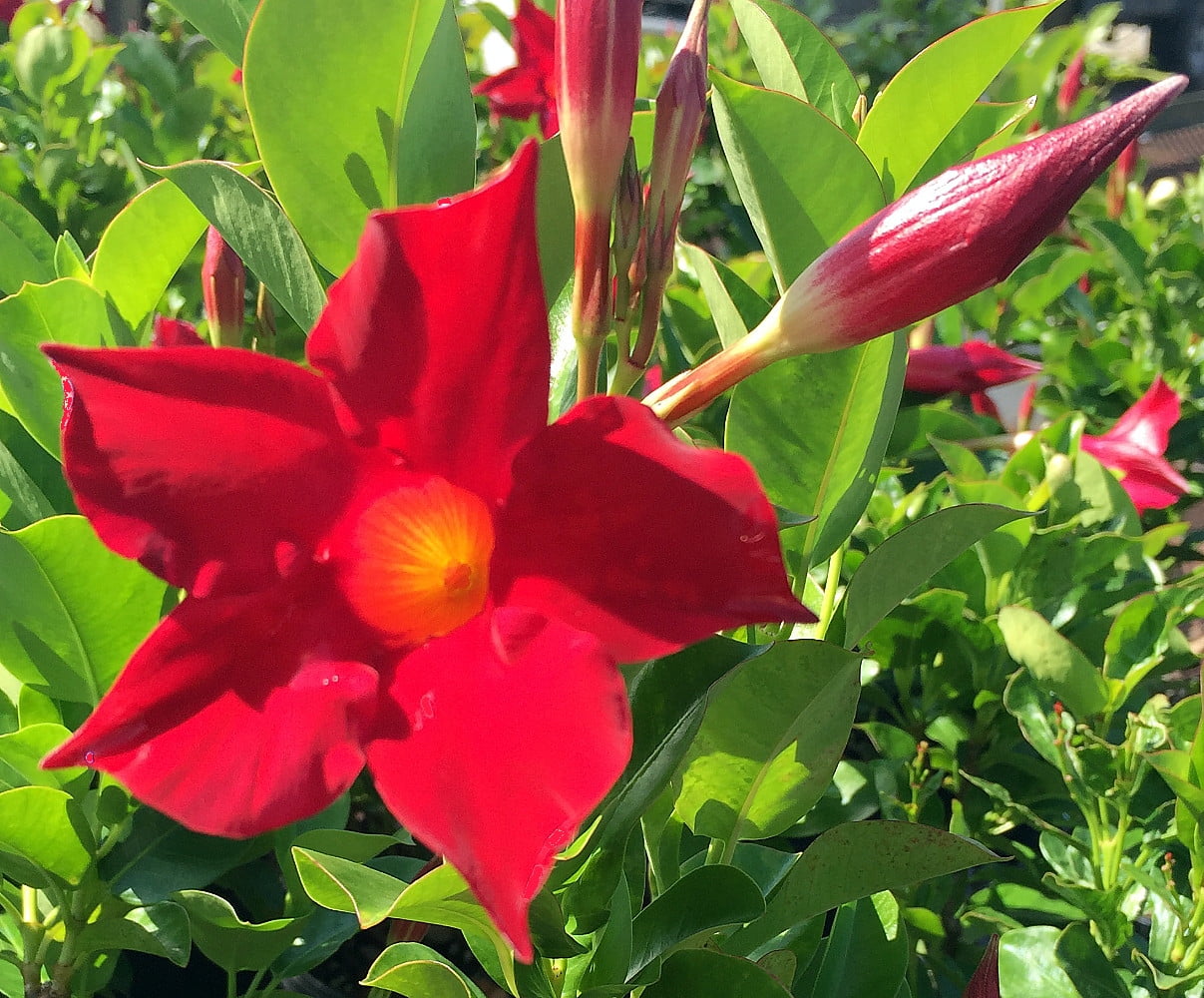With its lush green foliage and showy pink blooms, Brazilian jasmine adds tropical flair to gardens and containers. This versatile vine is popular for its climbing habit and long flowering period. But is it an annual that fizzles out each winter or a permanent perennial in the right climate? Let’s explore the details on Brazilian jasmine’s lifespan.
Overview of Brazilian Jasmine
Before looking at the perennial nature of Brazilian jasmine, here are some fast facts:
-
Botanical Name Mandevilla sanderi
-
Also called Dipladenia sanderi
-
Originates from Brazil
-
Evergreen vine in the dogbane family
-
Features glossy oval leaves and trumpet-shaped flowers
-
Blooms from summer to fall in pink, red, or white
-
Climbs by twining stems around supports
-
Grows up to 10 feet tall and 3 feet wide
With its tropical look and extended bloom time, it’s easy to see the appeal of Brazilian jasmine. But how long will this beauty continue growing in your garden?
Brazilian JasmineGrowth Habit
Brazilian jasmine is considered a tender perennial vine. This means it possesses the following key traits:
- Survives more than 2 years when conditions are suitable
- Maintains persistent above ground stems and foliage year-round
- Experiences dieback but regrows the following spring
- Goes dormant and loses leaves in extreme cold
As a perennial, Brazilian jasmine avoids having to be replanted annually. But it lacks the cold hardiness to remain evergreen in freezing winters.
Factors Impacting Perennial Nature
Several factors influence just how perennial Brazilian jasmine will behave:
-
Climate – Perennial in zones 9-11, marginal in zone 8, grown as annual in zones 3-7
-
Winter temperatures – Dies back each winter below 30°F
-
Location – More protected areas promote survival
-
Mulching – Insulates roots from hard freezes
-
Pruning – Cutting back in fall aids winter survival
-
Age – Becomes more cold tolerant as it matures over years
-
Health – Weak or stressed plants are less resilient to cold
With the right conditions, Brazilian jasmine will thrive for many seasons. But without protection, extreme winters will force it to cycle back from the roots annually.
Caring for Brazilian Jasmine as a Perennial
To get the most out of Brazilian jasmine’s perennial nature:
-
Site in a sheltered spot away from harsh winds
-
Provide a sturdy trellis, arbor, or fence for long vine growth
-
Amend soil with compost to improve drainage
-
Allow room for mature dimensions up to 10 feet tall & 3 feet wide
-
Prune back by one-third in late fall to prepare for dormancy
-
Mulch heavily around the roots in winter
-
Avoid excess nitrogen fertilizer late in the season
-
Monitor water needs and don’t overwater during dormancy
-
Expect dieback in cold zones but let roots recover naturally
With smart practices leveraging its perennial abilities, your Brazilian jasmine will thrive for many years to come.
Advantages of Brazilian Jasmine as a Perennial
Choosing perennials offers many gardening benefits over short-lived annuals. Here are some of the perks of Brazilian jasmine:
-
Saves time replanting each spring
-
Builds a bigger, bushier plant over successive seasons
-
Provides vertical structure as a climbing vine
-
Offers months of recurring colorful blooms
-
Enhances tropical garden schemes with evergreen foliage
-
Withstands drought better once established
-
Grows more cold resilient as it ages and matures
For gardens desiring a big punch of vibrant color even in winter, Brazilian jasmine is a perfect perennial plant choice.
Disadvantages of Brazilian Jasmine as a Perennial
The perennial nature of Brazilian jasmine also comes with a few drawbacks:
-
Requires heavy winter mulching and protection in zones 7 and under
-
Can lose its leaves or suffer dieback in extreme cold
-
Damaged vines may require hard spring pruning
-
Doesn’t bloom well without sufficient warmth and sun
-
Prone to scale insects and diseases needing treatment
-
Can become woody and unattractive without rejuvenation pruning
-
Vining stems need guidance and training over time
While not high maintenance, Brazilian jasmine performs best in warm climates where it can grow without interruption. Colder zones will require extra care.
Alternate Evergreen Vines for Cold Climates
For gardeners desiring a perennial vine but with more cold tolerance, consider these alternatives:
-
Honeysuckle – Fragrant and heat-tolerant option hardy to zone 4
-
Clematis – Stunning large blooms on vines suited down to zone 3
-
Trumpet Vine – Hardiest of all to zone 4 with bold orange flowers
-
Climbing Hydrangea – Lovely lacecap blooms on vigorous zone 5 vine
-
Virginia Creeper – Hardy grower with outstanding red fall color
Don’t be disheartened if Brazilian jasmine isn’t fully winter hardy for your area. One of these gorgeous perennial vines can provide beauty through the seasons instead.

DIPLADENIA Information and Growing Tips! ‘Brazilian Jasmine’ (Mandevilla sanderi)
FAQ
Will Brazilian jasmine survive winter?
Does jasmine plant come back every year?
Can Brazilian jasmine be planted outside?
Does Brazilian jasmine need a trellis?
- A Complete Guide to Caring for Yuki Cherry Blossom Shrub - January 23, 2025
- Identifying Red Hot Poker Seeds: What to Look For When Harvesting Torch Lily Pods - January 23, 2025
- A Complete Guide to Harvesting Evening Primrose Seeds - January 23, 2025
